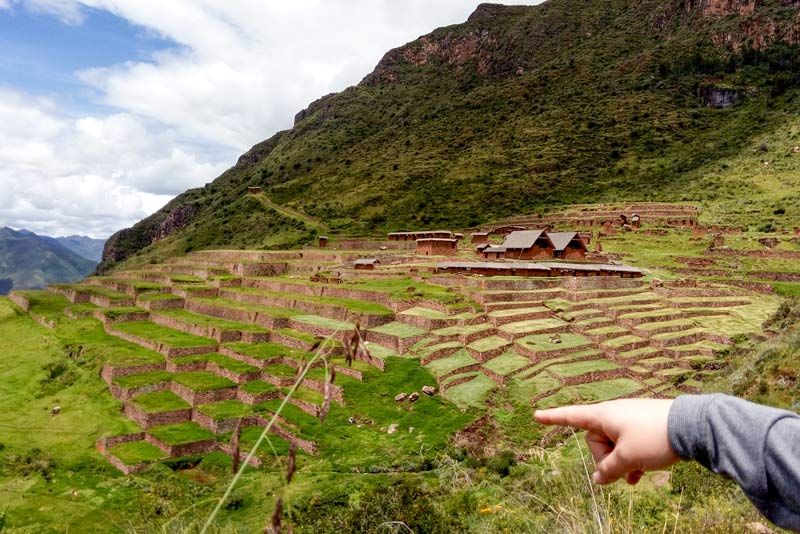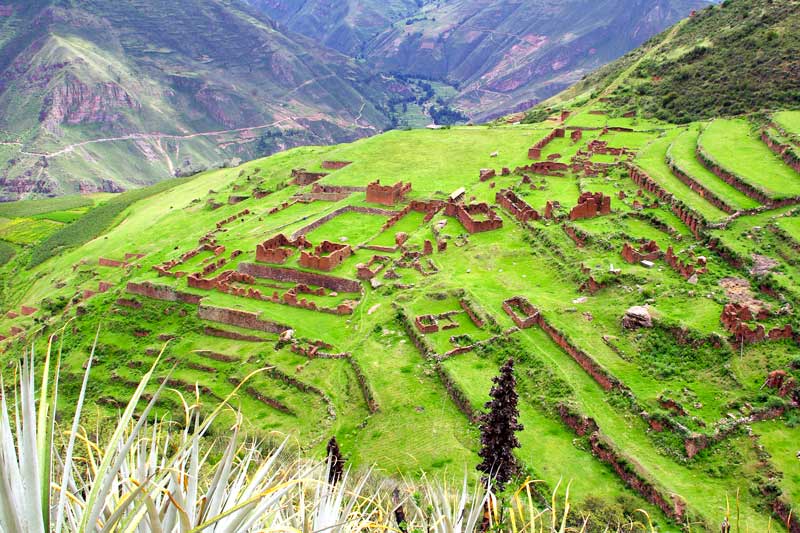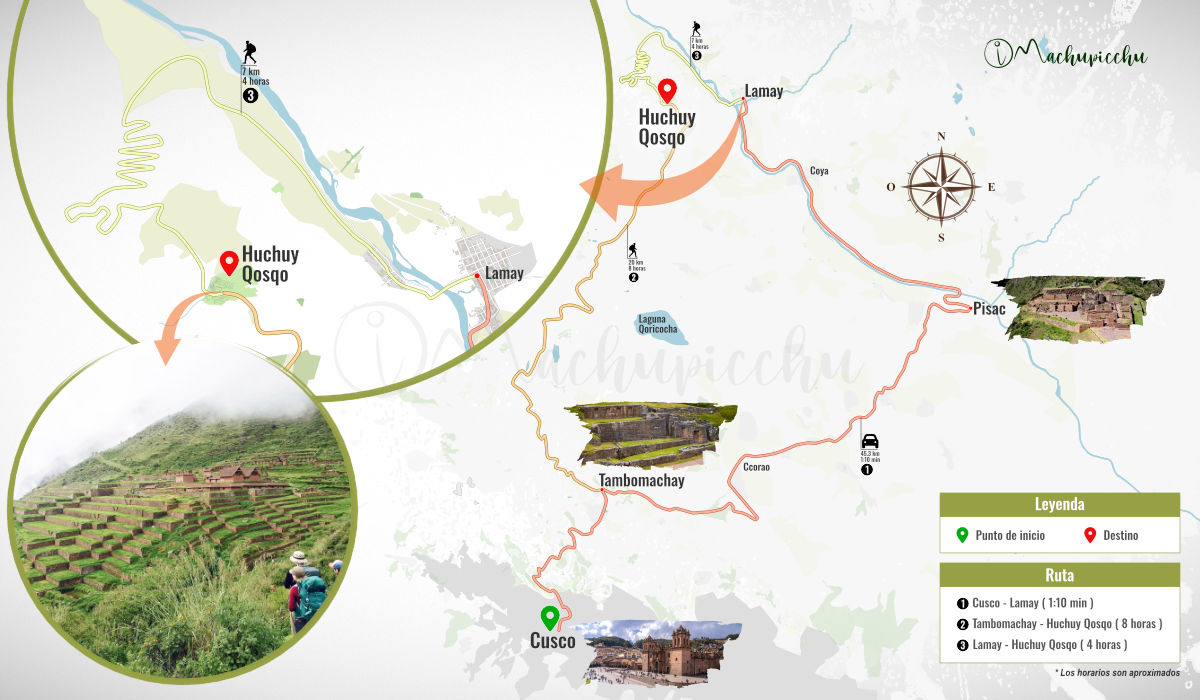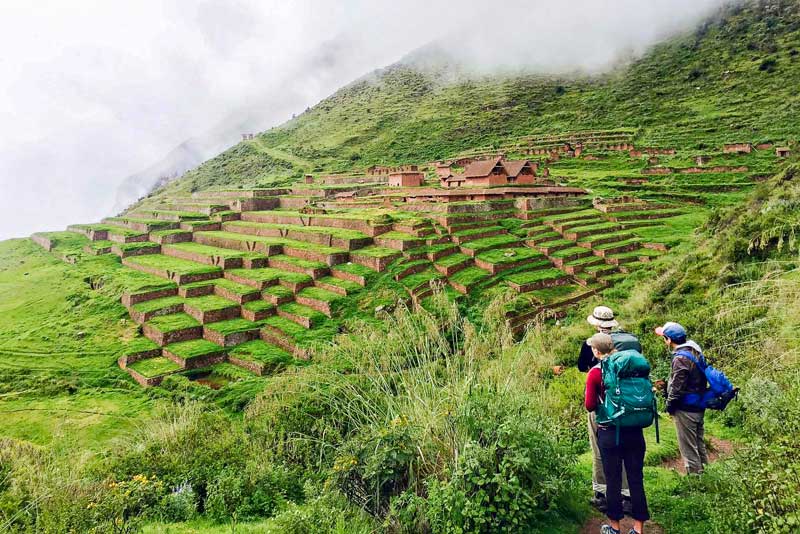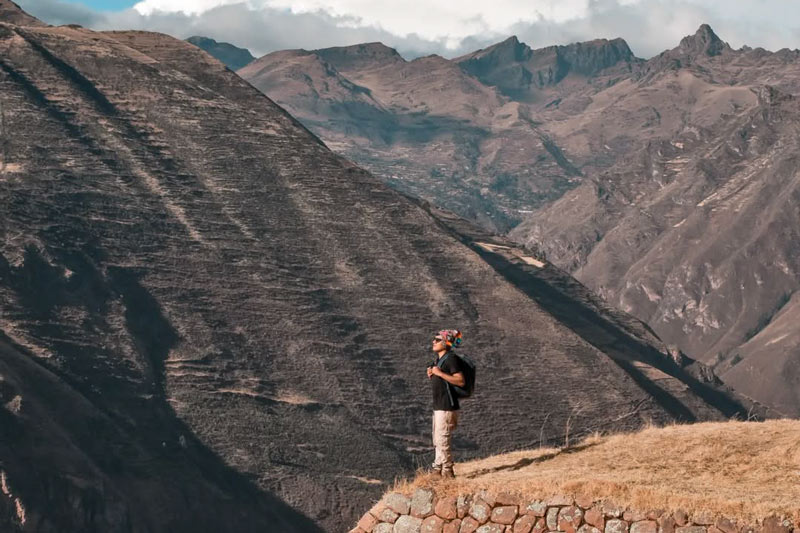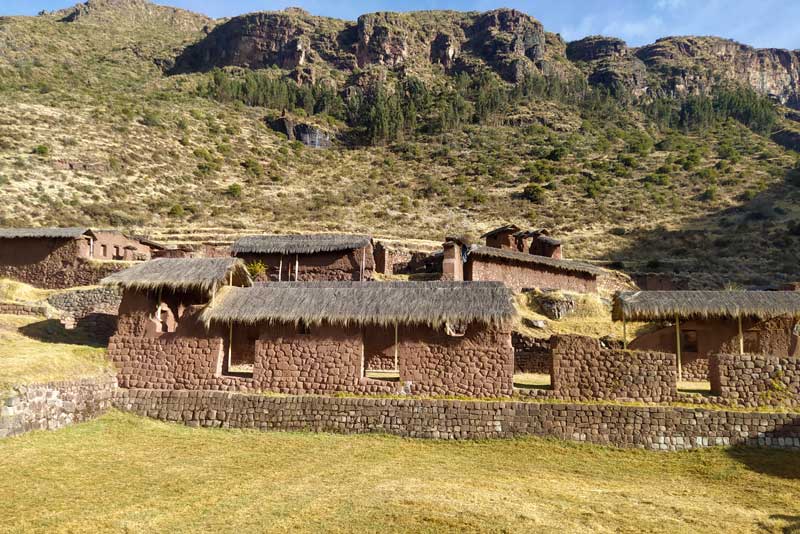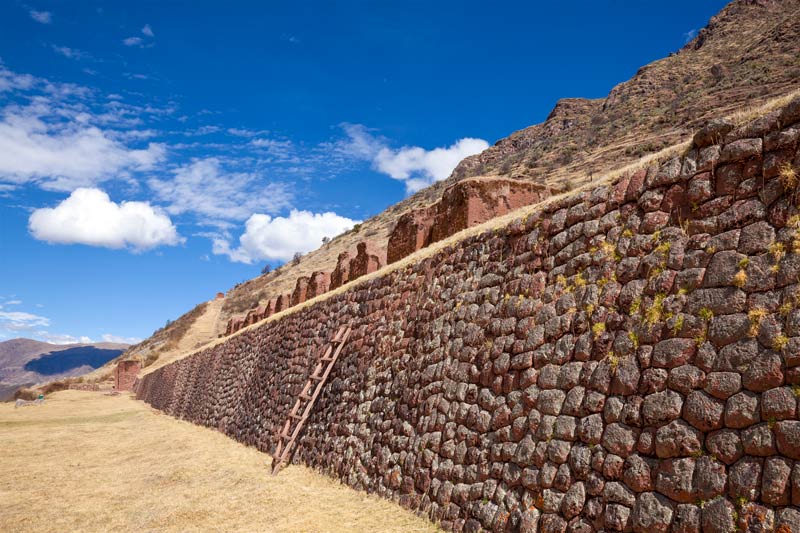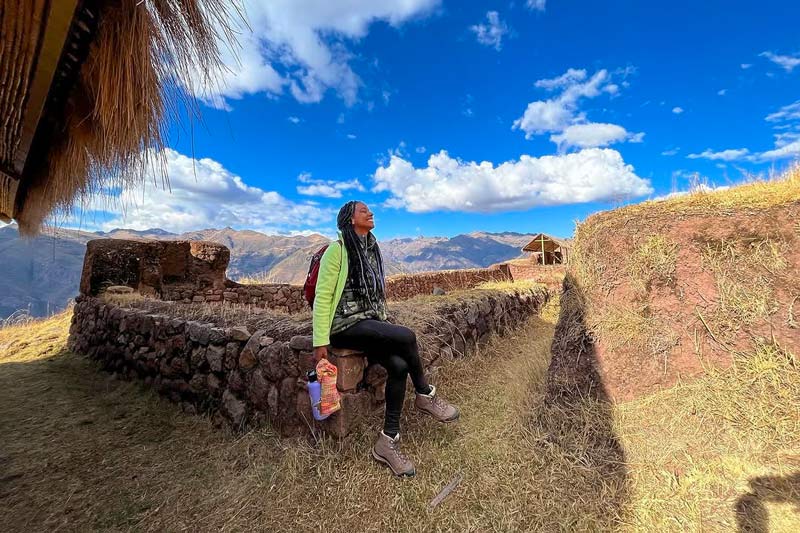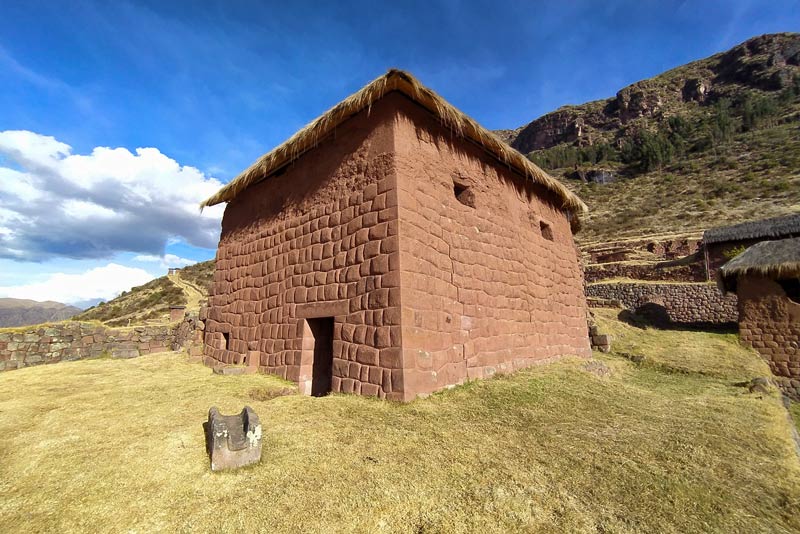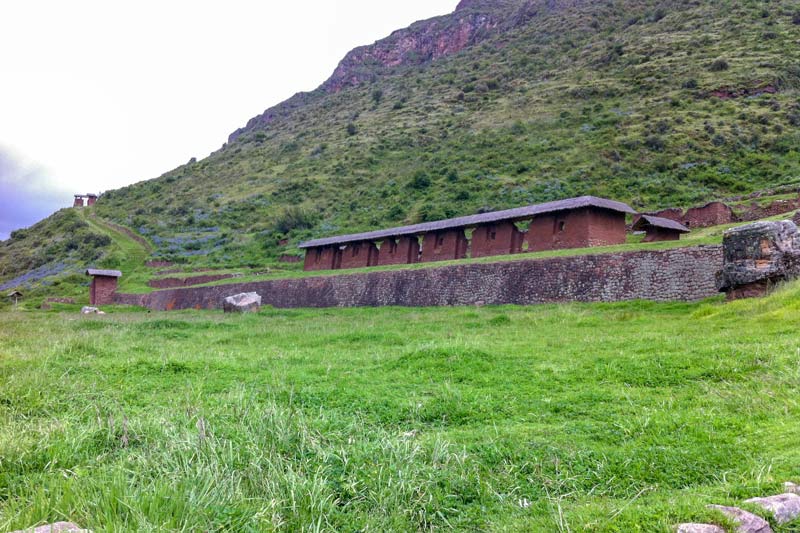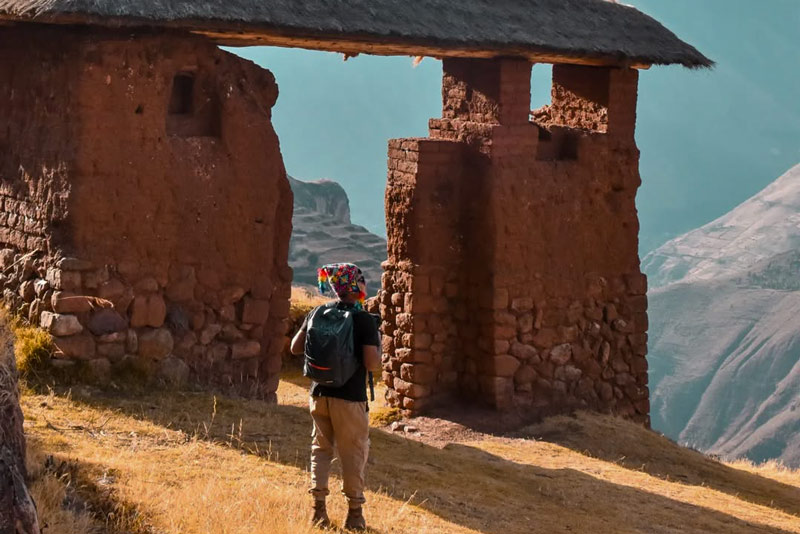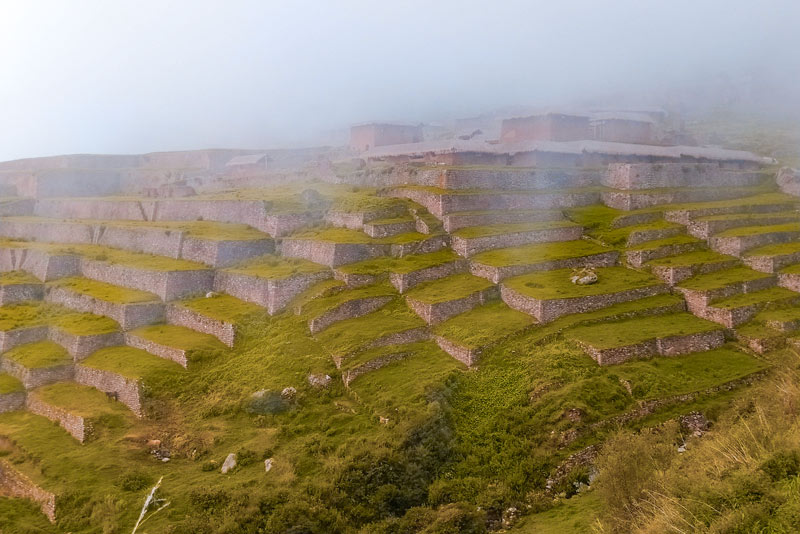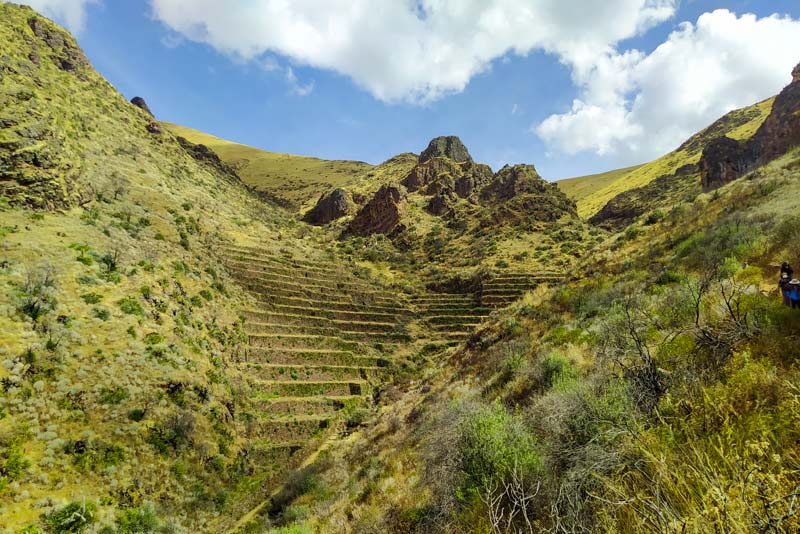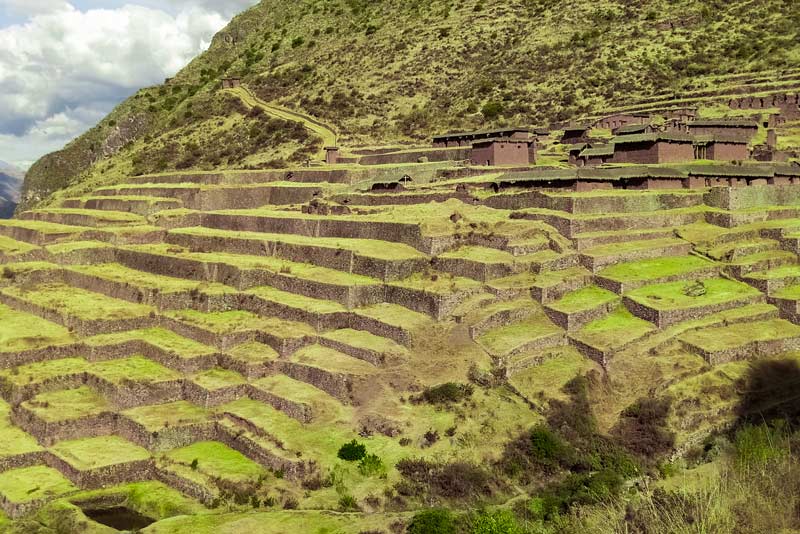Huchuy Qosqo Archaeological Site
Huchuy Qosqo, whose name means “Little Cusco,” is an Inca archaeological site located high in the Sacred Valley of the Incas. Although less known than other archaeological sites, it offers a unique experience for those seeking tranquility, connection with nature and an immersion in history. This destination stands out for its strategic location and spectacular views of the Sacred Valley and the surrounding snow-capped mountains, ideal for lovers of photography and hiking.
- What will I find at the Huchuy Qosqo Archaeological Site?
- Where is Huchuy Qosqo located?
- Features of Huchuy Qosqo
- How to get to Huchuy Qosqo?
- What to expect during the visit?
- What does Huchuy Qosqo mean?
- What was the objective of the Huchuy Qosqo archaeological site?
- Image gallery: Huchuy Qosqo
- Frequently Asked Questions
What will I find at the Huchuy Qosqo Archaeological Site?
At the Huchuy Qosqo archaeological site you will find an incredible combination of Inca architecture, impressive Andean landscapes and a connection with history and nature.
1. Architectural Structures
Kallankas:
- They are large rectangular halls made of stone and adobe, typical of Inca architecture.
- They are believed to have functioned as meeting places, storage or even temporary housing for travelers or rulers.
Agricultural Terraces:
- These terraces are a testament to Inca mastery of agriculture and management of mountainous terrain.
- They are accompanied by an irrigation system with canals that, in some cases, still function.
- They were used to grow crops adapted to the altitude, such as corn, potatoes and quinoa.
Residential Buildings and Warehouses:
- Small stone enclosures that were probably used as storage rooms or homes for those in charge of the site.
2. Natural and Landscape Elements
Panoramic Views:
- From Huchuy Qosqo, you can enjoy a privileged view of the Sacred Valley and the surrounding snow-capped mountains, such as Pitusiray and Sahuasiray.
- It is a perfect place for contemplation and photography.
Flora and Fauna:
- In the area you will find ichu (tall Andean grass), cacti and native shrubs.
- It is possible to spot vizcachas, Andean birds and other animals native to the region.
3. Cultural and Historical Connection
History of the Site:
- According to chroniclers, the site would have been built by the Inca Wiracocha as an administrative or agricultural center.
- Its design reflects a hybrid style between stone and adobe construction techniques, typical of the Inca period.
Ceremonial Use:
- Although it is not as evident as in other sites, it is believed that Huchuy Qosqo may have had a spiritual function linked to the cult of Pachamama (Mother Earth).
4. Visitor Experience
Tranquility and Authenticity:
- Being less visited than other archaeological sites such as Machu Picchu (Machu Picchu Travel Guide), it offers a more intimate and quiet experience.
- It is ideal for those seeking conscious tourism away from the crowds.
Relationship with the Local Community:
- At the base of the site, you can interact with communities that keep Andean traditions alive, offering typical food and knowledge about the history of the place.
Where is Huchuy Qosqo located?
Huchuy Qosqo is located in the heart of the Sacred Valley of the Incas, in the province of Calca, department of Cusco, Peru. This archaeological site is strategically located at 3,600 meters above sea level , on an elevated plateau that offers spectacular views.
Its location not only reflects the Inca’s ability to take advantage of the most challenging terrain, but also symbolizes their spiritual connection to the landscape.
Accessible via hiking trails from Tambomachay (Tambomachay: Interesting Facts) or Lamay, Huchuy Qosqo stands out for being off the beaten track, allowing visitors to explore the site in a peaceful setting, surrounded by majestic Andean nature.
Huchuy Qosqo was built on a territory previously inhabited by various human settlements, which over time were conquered and incorporated into the Inca domain. It is likely that one of these ancient settlements was located exactly where Huchuy Qosqo was built, which reinforces its importance as a key point in the history and development of the empire. The construction of this city combines the function of personal refuge of the Inca with the consolidation of power over the surrounding region.
Features of Huchuy Qosqo
| Aspect | Description |
|---|---|
| Altitude | Huchuy Qosqo is located 3,600 meters above sea level. |
| Region | It is located in the province of Calca, in the department of Cusco. |
| Accessibility | Access mainly via trekking routes from Tambomachay (Cusco) or Lamay (Sacred Valley), and also through organized tours. |
| Around | Natural It stands out for its mountainous landscapes, Andean flora such as ichu and views of the Vilcanota River. |
| Landscapes | It offers panoramic views of snow-capped mountains such as Pitusiray and Sahuasiray, as well as the Sacred Valley and surrounding communities. |
| Climate | The climate is mostly cold and dry, with temperatures ranging between 10°C and 20°C during the day, and lower at night. |
| Proximity to communities | It is close to Andean communities such as Lamay, whose inhabitants preserve traditions and complement the cultural experience of the visit. |
How to get to Huchuy Qosqo?
Getting to Huchuy Qosqo involves an adventure experience, as the routes to this archaeological site are designed for those who enjoy hiking and natural landscapes. Below are the main options for accessing this destination:
| Route | Description | Level of difficulty | Approximate duration | Recommendations |
|---|---|---|---|---|
| From Tambomachay | 20 km walk from the archaeological site of Tambomachay, passing through lagoons, Andean landscapes and rural communities. Ideal for lovers of long trekking. | Moderate – High | 6 to 7 hours | Acclimatize to the altitude, wear comfortable clothing, suitable footwear, water, snacks and sunscreen. Hire a guide if you are inexperienced. |
| From Lamay | Shorter route from the village of Lamay in the Sacred Valley. Uphill hike with spectacular views of the valley and the Vilcanota River. | Moderate | 2 to 3 hours | Take public transport to Lamay, start early, bring water and snacks. Ideal for those who prefer less demanding routes. |
| Organized Tours | A practical option for those seeking comfort and a guided experience. | Easy | Varies depending on the tour you choose | Book in advance, confirm the services included in the package, bring a camera and sunscreen. Ideal for those who do not want to worry about logistics. |
What to expect during the visit?
When visiting Huchuy Qosqo, travelers can expect a unique experience that combines history, nature and a deep connection with Andean culture.
From the moment the hike to the site begins, visitors are greeted by stunning landscapes ranging from the green valleys of the Sacred Valley (Calca in the Sacred Valley of the Incas) to the majestic snow-capped mountains such as Pitusiray and Sahuasiray, which accompany the tour.
The peaceful atmosphere of the place, far from the hustle and bustle of the more well-known tourist sites, allows visitors to enjoy a feeling of introspection, almost mystical. In addition, the proximity to the local communities around Huchuy Qosqo offers an opportunity to interact with the inhabitants, learn about their culture and traditions.
What does Huchuy Qosqo mean?
Huchuy Qosqo means “Little Cusco,” but it also has other names that refer to a place “from where lightning can be observed.” It is certainly a good name, given that being 800 meters above the Sacred Valley of the Incas, it offers the opportunity to see the dramatic sound and light show, in which lightning and thunder descend from the sky to crash into the landscape.
What was the objective of the Huchuy Qosqo archaeological site?
The main purpose of the archaeological site of Huchuy Qosqo, as can be seen from historical and archaeological evidence, was to serve as an administrative and strategic centre within the Inca Empire. Situated in a privileged location over the Sacred Valley, Huchuy Qosqo had several functions:
Administrative Center
Huchuy Qosqo is believed to have acted as a control point for the surrounding region, overseeing trade, agriculture and other vital aspects of Tahuantinsuyu. As part of the Inca system of territorial organization, it probably coordinated the productive and administrative activities of nearby villages.
Royal Refuge
According to the chroniclers, Huchuy Qosqo also fulfilled a more personal role for the Inca Wiracocha, who, in his old age, chose this place as his retirement home. Away from the bustle of the capital, the site offered him a quiet refuge where he could rest and get away from the pressures of the government of the empire. This suggests that the site had a ceremonial and residential function for the Inca elite.
Religious and Cultural Center
Although no direct evidence of major religious rituals has been found at Huchuy Qosqo, the location and construction of large agricultural terraces suggest that the site may also have had a ceremonial component, in which homage was paid to the gods and Pachamama (Mother Earth).
Agricultural and Productive Center
Huchuy Qosqo is surrounded by agricultural terraces, indicating that it had a purpose related to food production. These terraces allowed the cultivation of products adapted to the altitude, such as corn, potatoes and quinoa, essential for the supply of the empire.
Frequently Asked Questions
1) Where is Huchuy Qosqo located?
Huchuy Qosqo is located in the Sacred Valley of the Incas, in the province of Calca, department of Cusco, Peru. It is situated at about 3,600 meters above sea level and is accessible from the towns of Tambomachay and Lamay.
2) How do I get to Huchuy Qosqo?
You can reach Huchuy Qosqo on foot from the Tambomachay archaeological site, which involves a walk of approximately 6 to 7 hours. It is also possible to access it from Lamay, in a shorter walk of 2 to 3 hours.
3) What is the best time to visit Huchuy Qosqo?
The best time to visit Huchuy Qosqo is during the dry season, which runs from May to October, when the weather is more stable and the trekking routes are in better condition. During the rainy season (November to April), conditions can be more challenging.
4) What type of climate does Huchuy Qosqo have?
The climate in Huchuy Qosqo is cold, with temperatures ranging between 10°C and 20°C during the day and dropping considerably at night. It is recommended to wear clothing suitable for the cold and altitude.
5) Is it safe to trek to Huchuy Qosqo?
Yes, but due to the altitude and steep routes, it is recommended to be acclimatized to the altitude and bring appropriate equipment. Hiring a guide is highly recommended, especially if you are not used to long hikes or rough terrain.
6) What can you see in Huchuy Qosqo?
In Huchuy Qosqo you can see Incan structures, such as kallankas (large halls), agricultural terraces, and remains of residential buildings. In addition, the panoramic view of the Sacred Valley and the nearby snow-capped mountains is impressive.
7) Is there any kind of infrastructure for visitors?
Huchuy Qosqo is an archaeological site with little infrastructure development, making it ideal for those seeking a more authentic experience. There are no shops or accommodation on site, so it is recommended to bring water, food and appropriate clothing.
Advice from people who have been there
 By: Luhana G.
By: Luhana G.“Huchuy Qosqo Walk“
“A beautiful experience, the circuit is unique, due to the landscapes, the panoramic views and the mountains or Apus (spirits of the mountains) that surround and welcome you. The entrance to the Leon Punko sector is impressive, you walk along a wonderful Inca trail to Huychuy Qosqo, an impressive archaeological center.“
By Ticket Machu Picchu – Last updated, April 15, 2025
